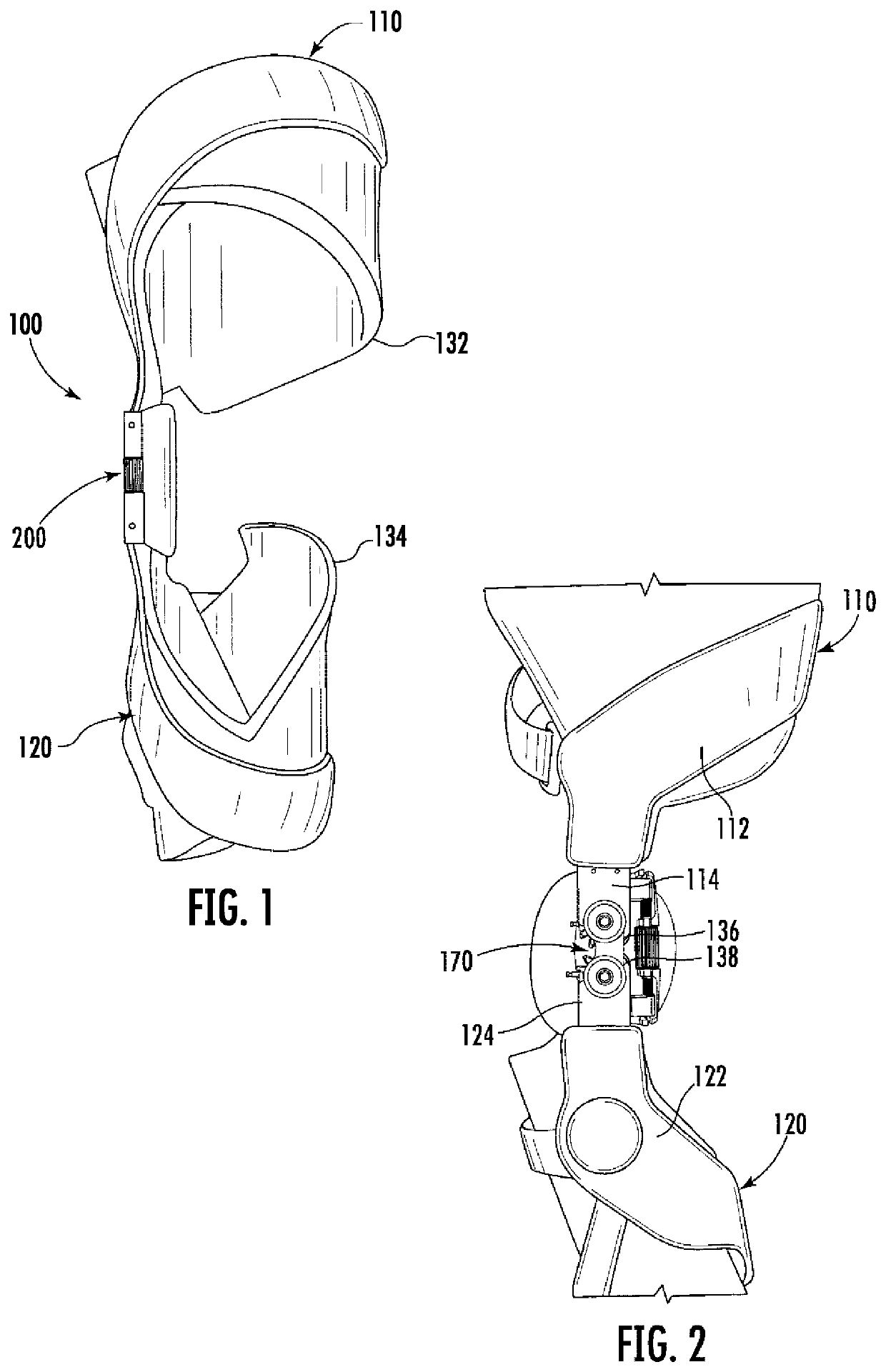Adjustable knee brace
a knee brace and adjustable technology, applied in the field of knee braces, can solve the problems of pain and discomfort, less isolative properties, and more limited mobility or immobility, and achieve the effects of enhancing mechanical advantage, facilitating knee brace adjustment, and increasing mechanical advantag
- Summary
- Abstract
- Description
- Claims
- Application Information
AI Technical Summary
Benefits of technology
Problems solved by technology
Method used
Image
Examples
Embodiment Construction
[0071]The following describes exemplary embodiments of the present invention. It should be apparent to those skilled in the art from the disclosure provided herein that the described embodiments of the present invention are illustrative and not limiting, having been presented by way of example only. All features disclosed in this description may be replaced by alternative features serving the same or similar purpose, unless expressly stated otherwise. Therefore, numerous and various other embodiments are contemplated as falling within the scope and spirit of the present invention. In addition, embodiments of the present invention comprising similar features and structure may be described singularly (e.g., description of an upper cuff without a corresponding description of a similar lower cuff). It will be obvious to persons skilled in the art, and from the disclosure provided herein, that such discussion and description of a first feature or structure is intended to, and does cover ...
PUM
 Login to View More
Login to View More Abstract
Description
Claims
Application Information
 Login to View More
Login to View More - R&D
- Intellectual Property
- Life Sciences
- Materials
- Tech Scout
- Unparalleled Data Quality
- Higher Quality Content
- 60% Fewer Hallucinations
Browse by: Latest US Patents, China's latest patents, Technical Efficacy Thesaurus, Application Domain, Technology Topic, Popular Technical Reports.
© 2025 PatSnap. All rights reserved.Legal|Privacy policy|Modern Slavery Act Transparency Statement|Sitemap|About US| Contact US: help@patsnap.com



